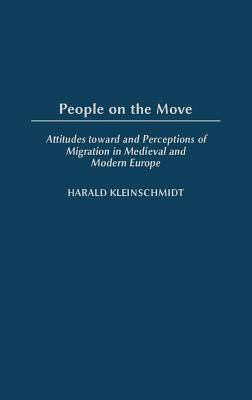
- Afhalen na 1 uur in een winkel met voorraad
- Gratis thuislevering in België vanaf € 30
- Ruim aanbod met 7 miljoen producten
- Afhalen na 1 uur in een winkel met voorraad
- Gratis thuislevering in België vanaf € 30
- Ruim aanbod met 7 miljoen producten
Zoeken
People on the Move
Attitudes toward and Perceptions of Migration in Medieval and Modern Europe
Harald Kleinschmidt
Hardcover | Engels
€ 161,45
+ 322 punten
Omschrijving
While most people in the world are descendants of migrants, not everyone is conscious of the migration patterns of their ancestors. The goals and motives for moving or staying are changing, diverse, and often difficult to specify. As a result of 19th-century residentialist social and political theories, many scholars generally assume that migration is a pattern of behavior that deviates from the norm and requires a specific motive or reason. This study details the variety of changing historical patterns of migrant behavior by examining migration patterns over 1500 years in Europe and Southeast Asia.
Kleinschmidt researches migrants and describes how they viewed themselves. He also includes a look at lawmakers, political decision-makers, and administrators to analyze the changes of their attitudes towards and perceptions of migration. The study places migration within and out of the two regions into a long timeframe to demonstrate the ubiquitous and transience of patterns of migrant behavior. It considers external attitudes and perceptions of migration within the context of the social and political theories of their own time. The two distinct geographic foci of the study allow for discussion of the characteristic features of each region.Specificaties
Betrokkenen
- Auteur(s):
- Uitgeverij:
Inhoud
- Aantal bladzijden:
- 304
- Taal:
- Engels
Eigenschappen
- Productcode (EAN):
- 9780275974176
- Verschijningsdatum:
- 30/12/2003
- Uitvoering:
- Hardcover
- Formaat:
- Genaaid
- Afmetingen:
- 154 mm x 242 mm
- Gewicht:
- 607 g

Alleen bij Standaard Boekhandel
+ 322 punten op je klantenkaart van Standaard Boekhandel
Beoordelingen
We publiceren alleen reviews die voldoen aan de voorwaarden voor reviews. Bekijk onze voorwaarden voor reviews.











